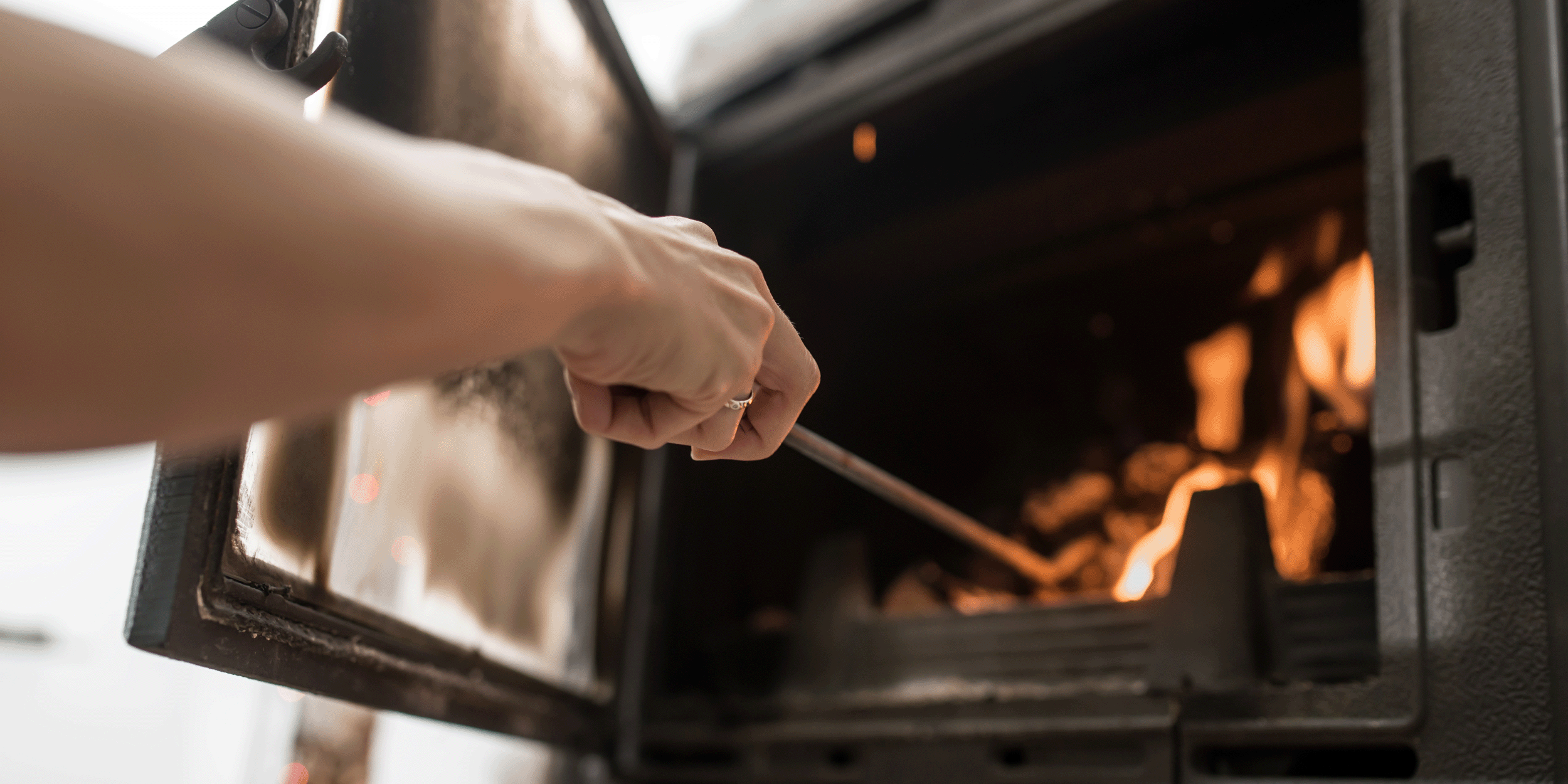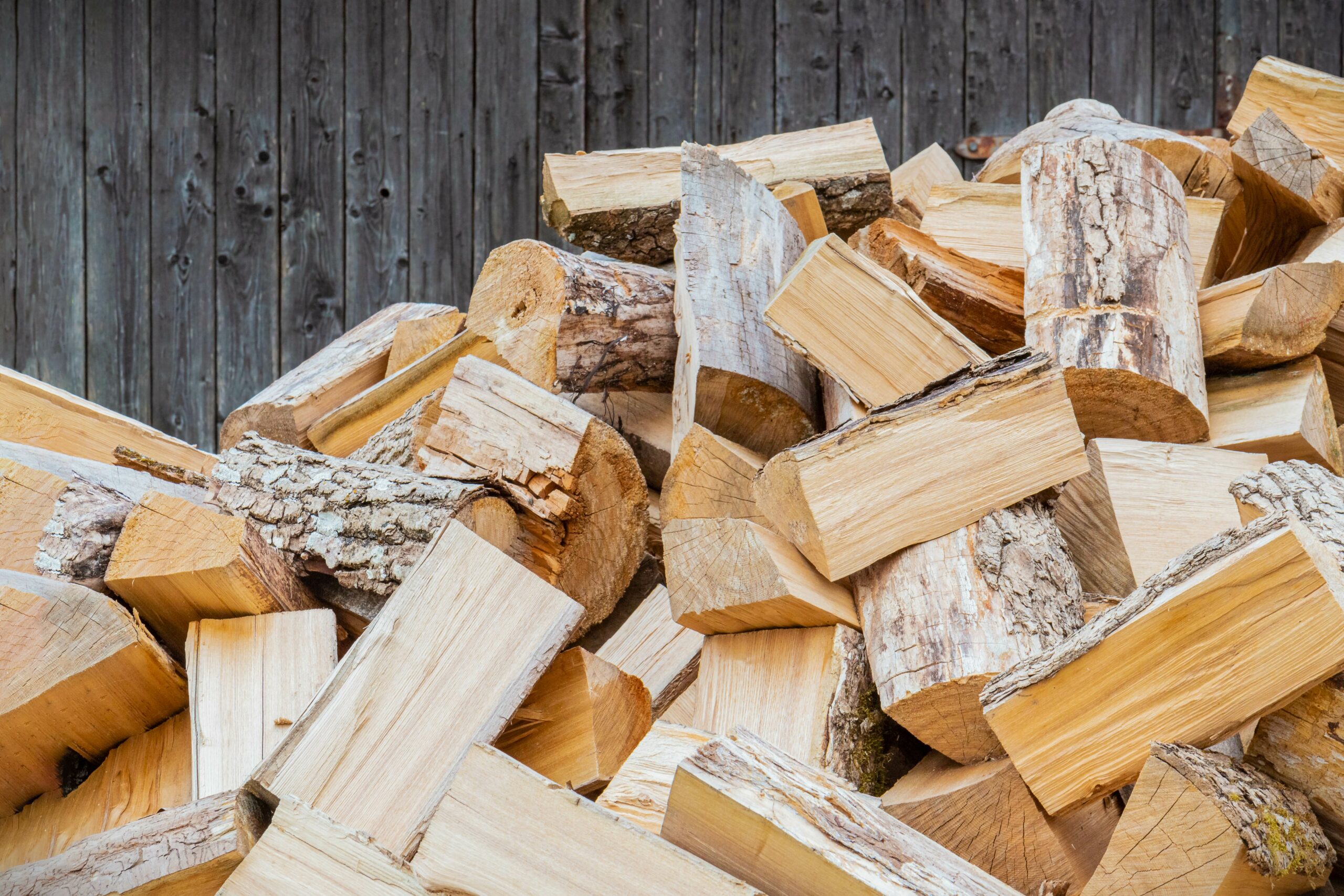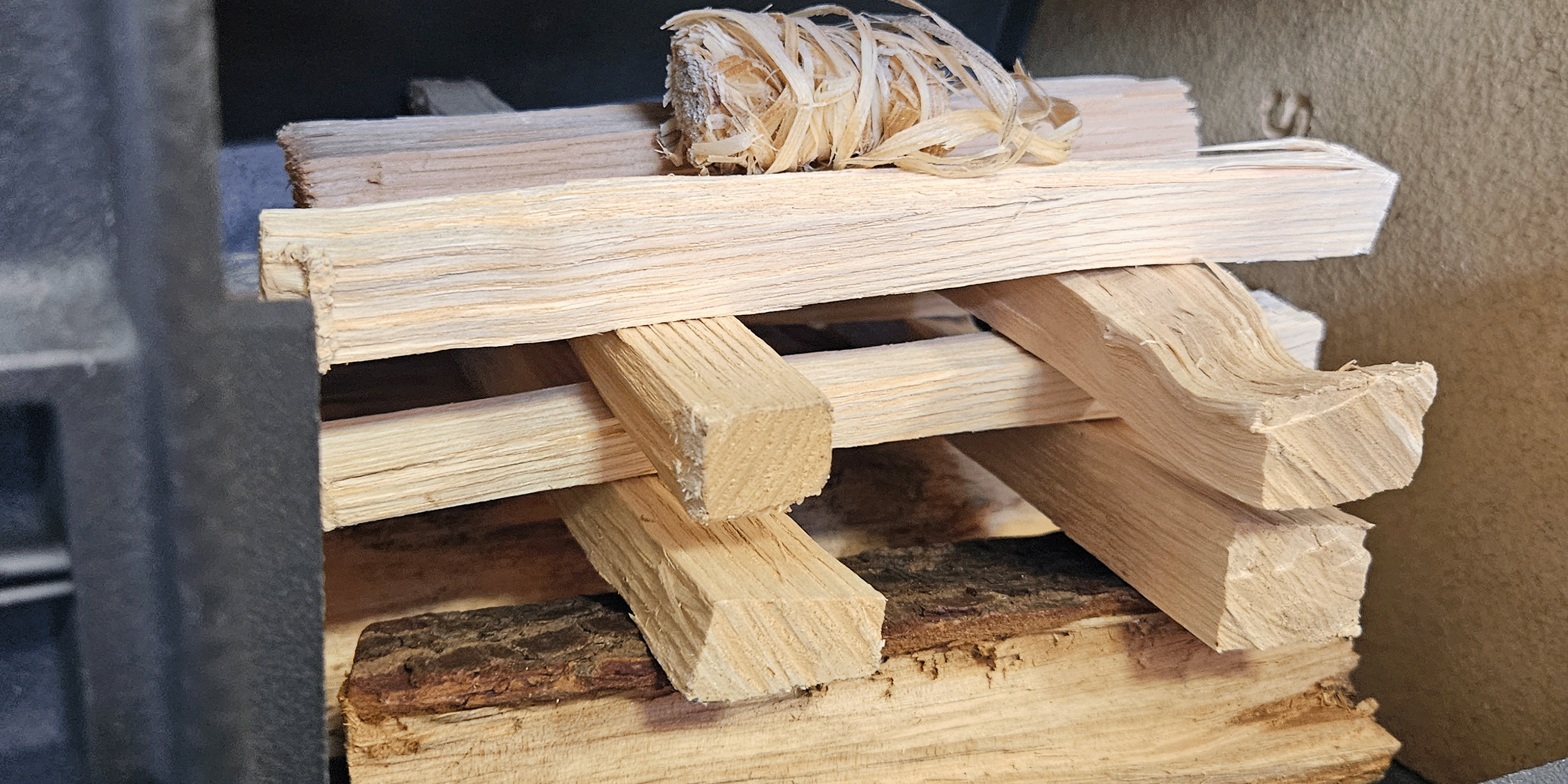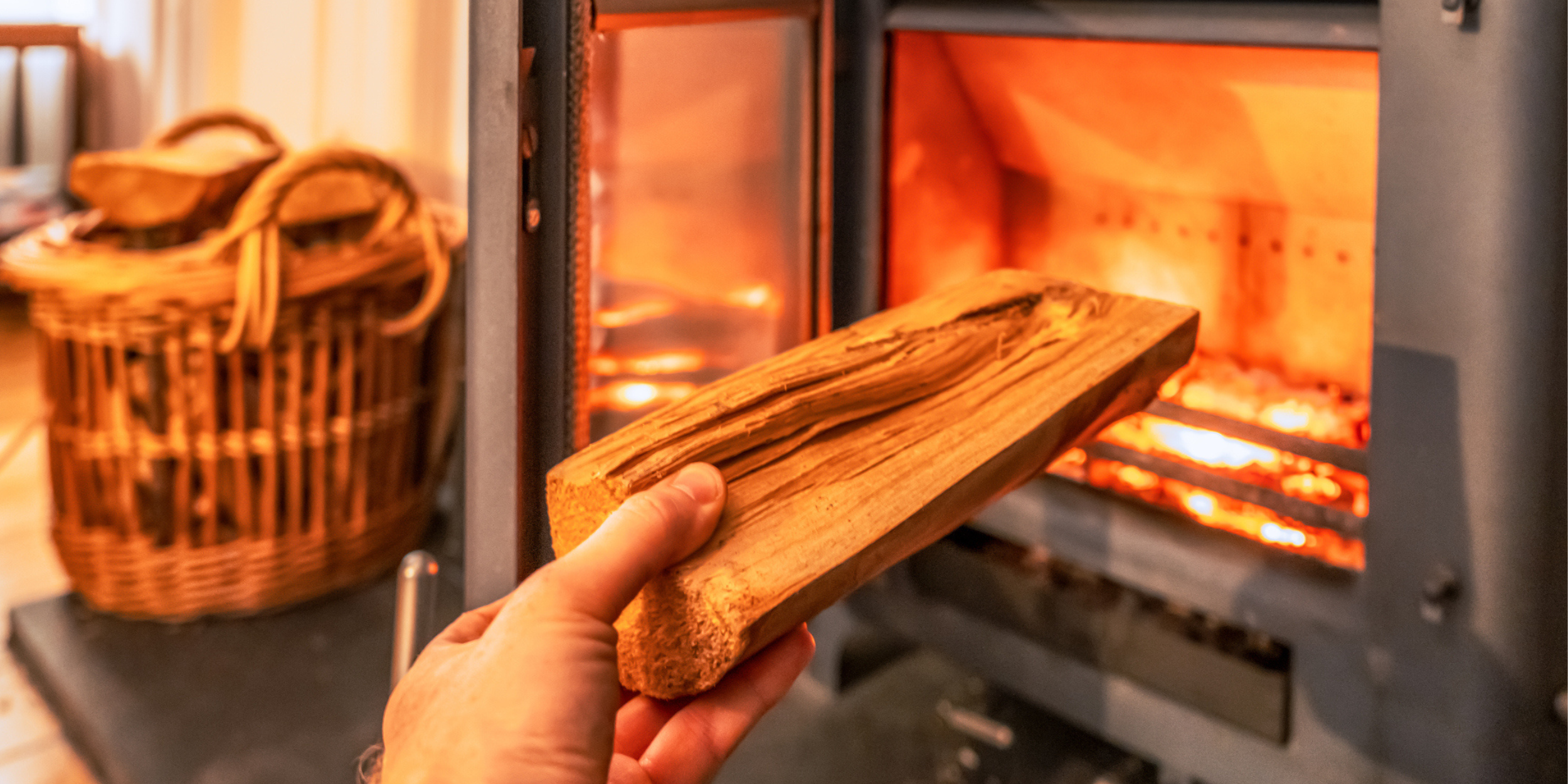What is creosote and why is it dangerous in your chimney?
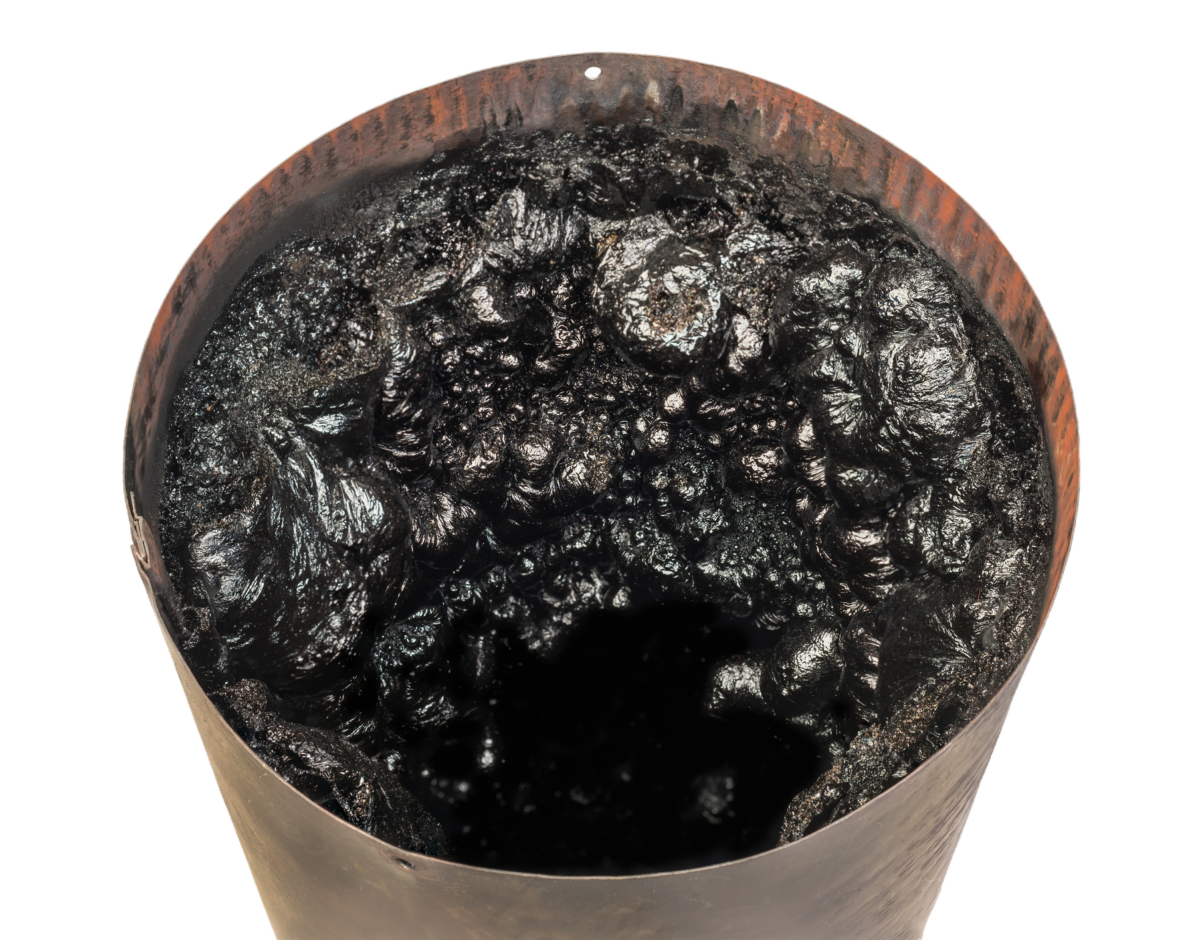
Creosote is a highly flammable, tar-like deposit in a chimney that consists of soot, chemicals, and a range of particles originating from incomplete combustion when burning wood or smokeless fuels. This carcinogenic substance encompasses a range of materials, with the composition of each deposit being virtually unique.
A number of factors affect the composition of creosote in a chimney, such as: the species and moisture content of the wood being burned, the appliance size and operation, the characteristics of the chimney and flue system, and the environmental conditions. Even burning smokeless fuels can cause creosote to form in your chimney if your installation has sizing or heat issues.
Combustion by-products cool as they are drawn up through the chimney, condensing along the walls to form creosote deposits. These creosote deposits contain acetic acid which can trap the carbon from smoke produced by your fire, creating an extremely flammable substance that grows as you burn.
Large amounts of creosote in a chimney poses dangers such as chimney fires and carbon monoxide poisoning. The occurrence of creosote deposits in your chimney can be significantly reduced through the responsible use of your stove: burning wood with a moisture content of less than 20%, ensuring there is sufficient airflow for your fire to burn hot, and regularly getting your chimney swept will help decrease the rate at which creosote forms in your chimney.
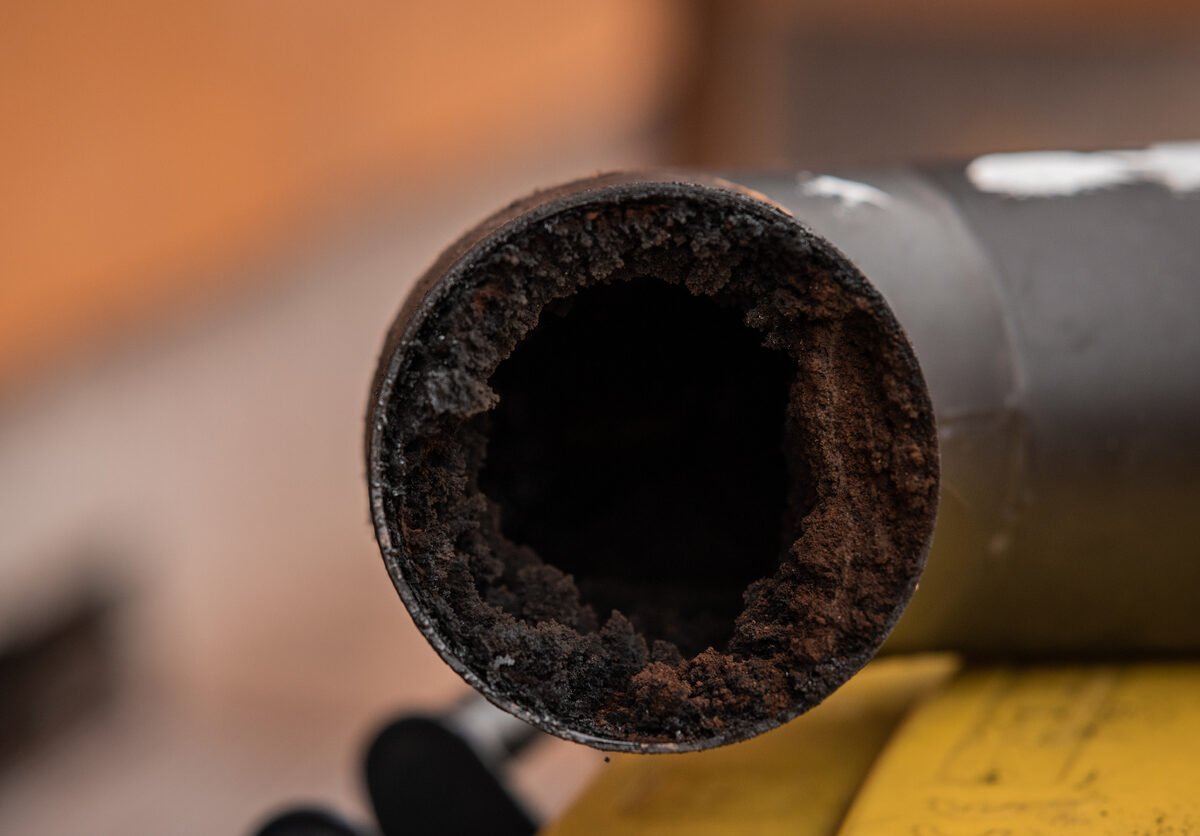
Types of creosote build-up
The rate that creosote builds in your chimney varies due to a variety of factors; the structure and composition of your flue system, the weather, and the wood you are burning impact how quickly deposits can build up.
There isn’t a uniform rate of build-up – all appliances, fires, and chimney systems are different.
There are three classifications commonly used to differentiate the level of creosote build-up in a chimney:
First degree creosote build-up
Resembling a coating of dark dust on the walls of your chimney, first degree creosote is primarily composed of soot and is the easiest to eliminate. First degree creosote build-up causes minimal issues; the main concern is if the build-up increases in size.
This level of creosote can easily be swept manually by a HETAS Approved Chimney Sweep and is a natural occurrence when burning wood.
If you are burning responsibly, this build-up should be slow. Having your chimney swept twice a year should be sufficient to keep the build-up low and manageable.
Second degree creosote build-up
Forming thick, shiny black flakes, second degree creosote is significantly more difficult to remove. The increased size of these deposits can cause your chimney draught to become restricted, resulting in smoke and other gases such as carbon monoxide re-entering the room. As these deposits are larger, there is an increased chance that they cause a significant chimney fire if they ignite.
Power sweeping tools are required to effectively remove this level of creosote; a standard brush won’t have the power to dislodge more stubborn deposits. HETAS Approved Chimney Sweeps come equipped with the necessary power sweeping tools to remove second degree creosote, although this will require more time than a standard sweep.
This level of build-up most commonly occurs due to irresponsible burning or when your chimney hasn’t been swept for a prolonged period of time.
Third degree creosote build-up
Resembling glossy, thick tar dripping down your chimney, third degree creosote is a serious issue that requires immediate attention. This level of creosote can liquefy at high temperatures, causing it to drip down your chimney, resembling thick wax as it cools. As large deposits of creosote reduce the cross-sectional area of your chimney, your chimney’s draught is significantly reduced. This can result in smoke and carbon dioxide leaking back into the room.
Third degree creosote is incredibly difficult to remove; a rotary chain is often the most suitable option to reduce large deposits. Removing creosote of this level can damage clay flue liners and, if the build-up is severe enough, a replacement flue liner may be advised, significantly increasing costs.
This level of build-up is a result of irresponsible burning practices. Burning wet wood, having an unsuitably large flue for your appliance, and neglecting regular chimney sweeps all contribute to this severity of creosote build-up.
Dangers of creosote in a chimney
The most common cause of chimney fires is combustible deposits being ignited – creosote is a combustible deposit that will continue to accumulate as you use your stove, increasing the likelihood of a chimney fire.
Creosote creates structural, physical, and financial risks when it is present in your chimney. The likelihood of these risks occurring increases as the build-up increases. It is important to burn responsibly and get your chimney swept by a HETAS Approved Chimney Sweep to prevent these risks.
Structural risks
Chimney fires can occur due to creosote in your chimney igniting, resulting in potentially devastating chimney fires that can turn into house fires.
Damage to the flue liner and chimney brickwork can happen when there are particularly large creosote deposits due to creosote’s acidic composition.
Physical risks
Carbon monoxide poisoning can occur if the products of combustion are not able to be drawn by your chimney – the carbon dioxide emitted when burning wood can be fatal if it re-enters the room.
Harmful particulates can enter the room if creosote has blocked your chimney and reduced your chimney draught, causing life-threatening health effects.
Financial risks
You will need an extensive chimney sweep to successfully clear significant creosote build-up – this level of sweep can cost much more than a standard sweep.
You may need to replace your flue liner or chimney brickwork if you have excessive creosote build-up; the tools required to eliminate large deposits often result in damage that will cost a considerable amount to repair.
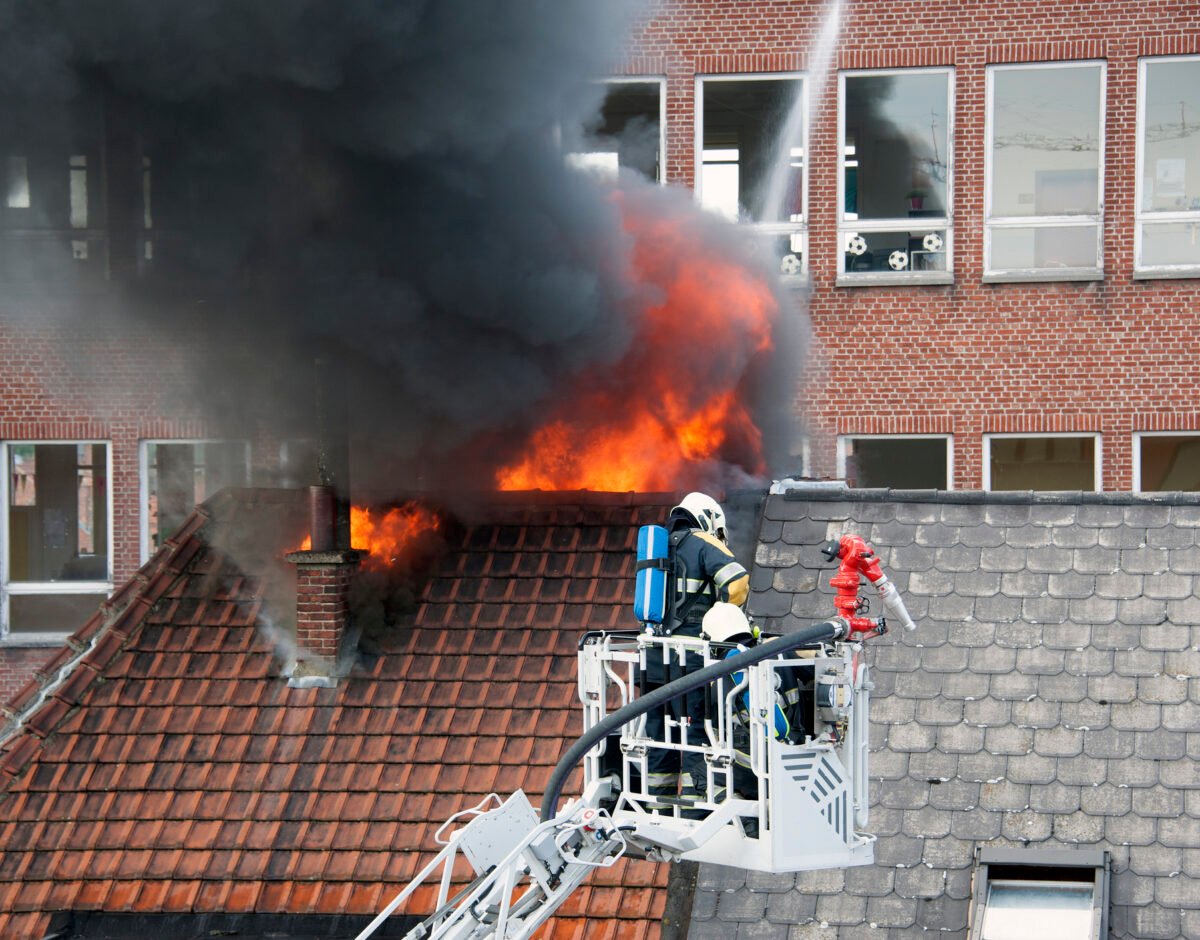
If you continue to burn whilst having creosote build-up in your chimney, these deposits will continue to be heated. When creosote rises in temperature, it undergoes the same process of pyrolysis as wood. This process emits gases that can be used as fuel for flames or embers in your flue, starting a fire. These gases carry a high amount of energy, producing large and dangerous flames when ignited. If one of these gases ignites, there is a high possibility that it can ignite other creosote deposits in the chimney, causing a chain of events that lead to a catastrophic chimney fire.
Creosote doesn’t need flames to cause a fire
Creosote’s inherent danger arises from its ignition susceptibility. Creosote’s low flash point means an ember from your stove can ignite it with ease, creating a fire. However, there is another danger with creosote, arising from its auto-ignition point.
Creosote’s flash point is just 73.9°C
Flash point is the minimum temperature an ignition source must be for a material to ignite.
Material with a lower flash point is more susceptible to being set alight; less temperature is needed to create a flame.
Creosote’s auto-ignition point is just 232.8°C
Auto-ignition point is the minimum temperature required for a material to set alight when reaching a high temperature without an external source of ignition – spontaneous ignition.
Material with a low auto-ignition point is more susceptible to being set alight; less heat is required to create a flame.
Book a HETAS Approved Chimney Sweep
Chimney fires follow the same conditions as starting a fire – heat, fuel, and oxygen is required. Heat and oxygen will be present in your chimney whilst you burn; don’t risk a chimney fire by not eliminating the creosote that will act as a highly flammable fuel.
Book a HETAS Approved Chimney Sweep and make sure your chimney is clear of any potentially dangerous deposits.
